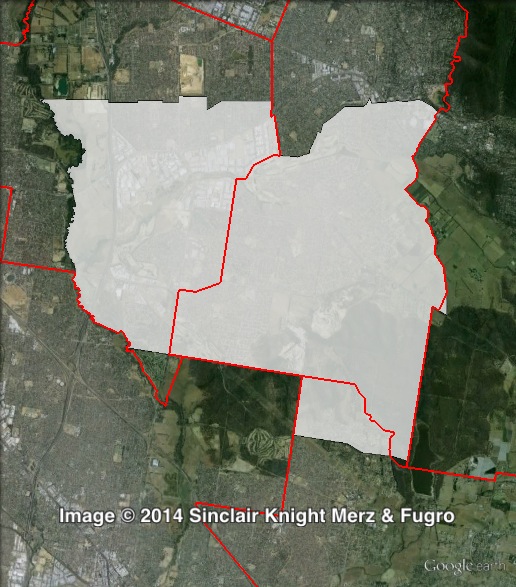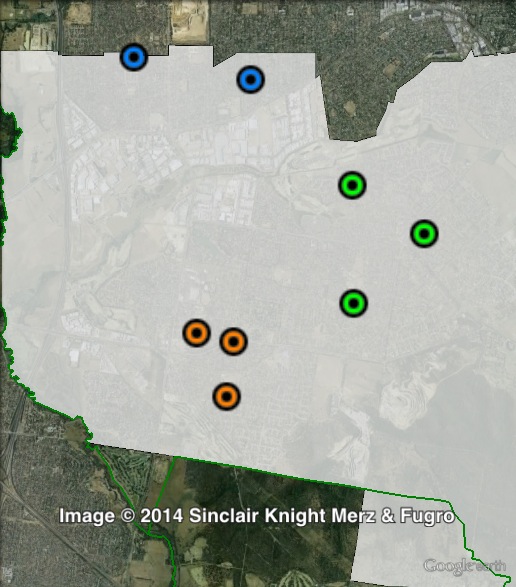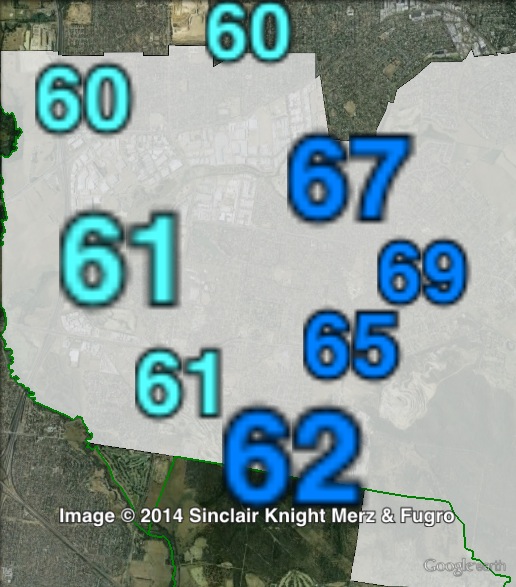LIB 13.1%
Incumbent MP
Kim Wells, Member for Scoresby since 2002. Previously Member for Wantirna 1992-2002.
Geography
South-eastern Melbourne. Rowville covers the suburbs of Lysterfield, Lysterfield South, Rowville, Rowville East, Scoresby and parts of Knoxfield and Ferntree Gully. Rowville covers southern parts of the City of Knox, and a small part of the City of Casey.

Redistribution
Rowville is a new electorate, taking in southern parts of the electorates of Scoresby and Ferntree Gully, and is the successor to Scoresby. Scoresby was previously included in the Eastern Metropolitan region but Rowville is contained in the South East Metropolitan region. These changes cut the Liberal margin from 14.1% in Scoresby to 13.1%.
History
Rowville is a successor seat to Scoresby.
The current district of Scoresby was first created at the 2002 election. It had previously existed from 1945 to 1976, when it was always held by the Liberal Party.
Scoresby was won in 2002 by Liberal MP Kim Wells, whose seat of Wantirna had been abolished in the recent redistribution. He was re-elected in 2006, and again in 2010. Wells served as Treasurer following the 2010 Victorian election. When the leadership of the Liberal Party changed in 2013, Wells shifted to serve as Minister for Police and Emergency Services in the Napthine government.
Candidates
- Tim Wise (Greens)
- Leanne Price (Rise Up Australia)
- Kim Wells (Liberal)
- Tamika Hicks (Labor)
Assessment
Rowville is a safe Liberal seat.
2010 election result – Scoresby
| Candidate | Party | Votes | % | Swing | Redist |
| Kim Wells | Liberal | 20,745 | 59.05 | +5.93 | 56.90 |
| Garry Nightingale | Labor | 10,388 | 29.57 | -2.82 | 30.17 |
| Salore Craig | Greens | 2,821 | 8.03 | +1.52 | 6.63 |
| Rachel Hanna | Family First | 1,178 | 3.35 | -3.42 | 2.99 |
| Sex Party | 2.35 | ||||
| Democratic Labor | 0.92 | ||||
| Other independents | 0.04 |
2010 two-party-preferred result – Scoresby
| Candidate | Party | Votes | % | Swing | Redist |
| Kim Wells | Liberal | 22,259 | 64.14 | +2.97 | 63.10 |
| Garry Nightingale | Labor | 12,598 | 35.86 | -2.97 | 36.90 |

Booth breakdown
Booths in Rowville have been divided into three areas: east, north and south. The south includes Rowville, the north includes Scoresby, and the east includes Lysterfield.
The Liberal Party won a solid majority of two-party-preferred votes in all three areas, ranging from 59.8% in the north to 66.9% in the east.
| Voter group | GRN % | LIB 2PP % | Total | % of votes |
| South | 6.43 | 61.48 | 10,416 | 30.55 |
| East | 5.01 | 66.85 | 8,834 | 25.91 |
| North | 8.67 | 59.78 | 5,190 | 15.22 |
| Other votes | 7.22 | 62.27 | 9,659 | 28.33 |



Interesting how they’ve redrawn Scoresby/Rowville and Ferntree Gully from north-south running to east-west running. Rowville actually draws more voters from the old Ferntree Gully than from Scoresby, and indeed more than the new Ferntree Gully.
The pair of seats – Wantirna/Scoresby/Rowville and Knox/Ferntree Gully – have, like the overlapping federal seat of Aston, shifted from quite competitive electorates to more Liberal leaning ones. Since 1992, Labor has only won one once: Ferntree Gully at the height of the Brackslide in 2002.
I grew up in Wantirna South, and the east-west alignment is much more in line with communication patterns, etc. Apart from Stud Road, there’s no major north-south link in Knox. The actual boundaries they chose are a bit messy, but the principle makes much more sense than north-south.
You still have areas like Bayswater and Boronia which are more Labor voting (I still think Bayswater is a bit of a dark horse for Labor if they have a good result), but in the last 10-20 years most of Knox has become fairly affluent and settled, i.e. more safe-ish Liberal than swing voting.